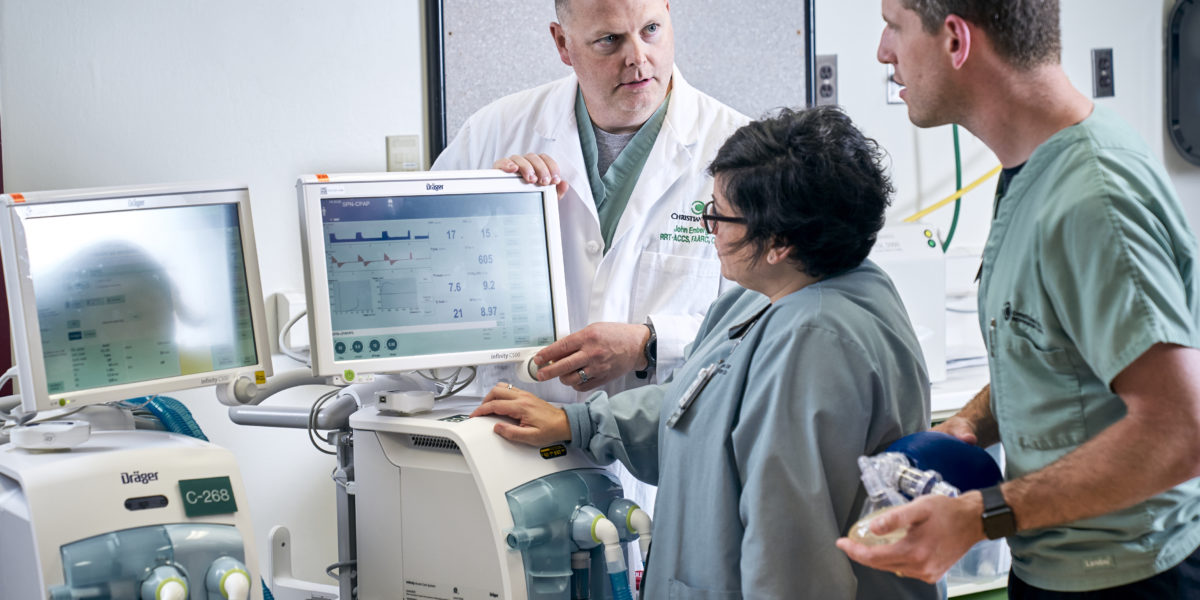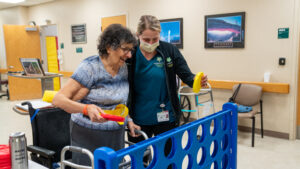Christiana Care is one of just a dozen U.S. health systems to receive the 2019-20 Apex Recognition Award from the American Association for Respiratory Care. The award – in the Acute Care Hospital category — recognizes Christiana Care for excellence in respiratory therapy in an acute care setting. Christiana Care is one of only two health systems in the Philadelphia region to receive this national recognition.
“Throughout the health system, our respiratory therapists provide excellent care every day to our patients — from the smallest infants to patients with chronic lung disease,” said John Emberger, BS, RRT-AACS, FAARC, CPHQ, director of Respiratory Care.
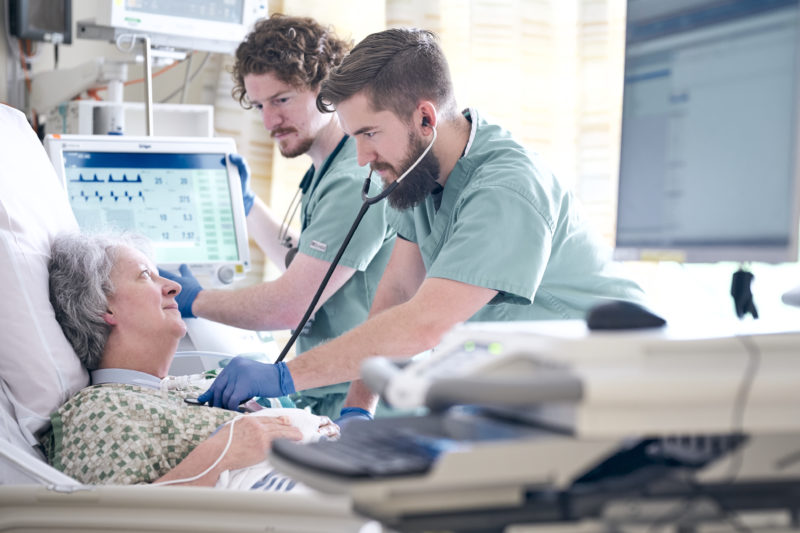
Respiratory therapists care for patients who have difficulty breathing because of chronic illnesses such as asthma and emphysema and patients who need emergency breathing support. The Respiratory Care team, with nearly 150 caregivers, conducts breathing tests, therapies and airway management for patients at Christiana Care’s Wilmington Hospital and Christiana Hospital.
“Whether they’re initiating ventilation or helping a patient learn to administer asthma treatments, respiratory therapists are an essential part of a life-saving team,” said Emberger.
With 13 markers of excellence, the Apex Award recognizes best practices in respiratory care, patient safety, quality improvement and commitment to professional development.
“Our respiratory therapists are leaders in the field,” said Michael G. Benninghoff, D.O., section chief of Critical Care Medicine and medical director of Respiratory Care. “They set a standard of excellence for themselves and for caregivers nationally and serve their patients with compassion and empathy.”
Waking up in the ICU
Christiana Care’s respiratory therapists work in critical care units to manage life support for patients who’ve experienced a traumatic injury or have a life-threatening respiratory condition.
“Much of our work is about putting yourself in the place of the patient, who may have just gone from being able to walk, talk and eat on their own to depending on others for all of their needs,” said Mark Staples, RRT, a respiratory therapist at Christiana Care since 2004.
“They wake up in the ICU frightened and often unable to breathe on their own following surgery or trauma,” said Staples. “We are at their side to reassure them and to help them get back to breathing on their own as soon as possible.”
In the ICU, respiratory therapists are part of a team that includes speech language pathologists who assess the patient’s ability to swallow and nurses who guard against the pressure ulcers that can come with a ventilator, a life-sustaining medical device that provides oxygen when when patients are unable to breathe on their own.
One of the team’s roles is to protect patients from ventilator-associated events (VAEs), potential complications that come with life support.
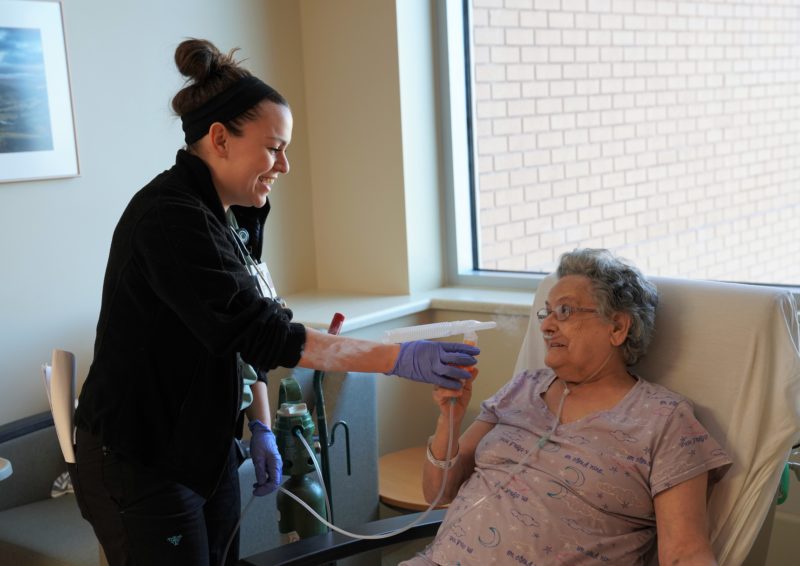
“By serving together, we can help patients move past the critical stage and toward their best health,” said Maureen Seckel, APRN, ACNS-BC, CCNS, CCRN, FCCM, AMSL, quality and safety clinical nurse specialist and sepsis coordinator.
Respiratory therapist Michelle Bair, RRT, led a team to prevent the conditions that trigger VAEs. The team developed specialized educational materials for every caregiver with best practices including ventilator settings and patient positioning.
“Implementing new protocols requires an all-hands-on-deck approach,” said Kathleen Bonis, RRT-NPS, clinical manager of Respiratory Care. “We don’t do it alone.”
In an especially successful protocol, caregivers elevate the head of a patient on a ventilator to lower the risk that bacteria in the digestive tract can escape into the lungs, where it may cause a life-threatening infection.
Piloted in the neurological and surgical intensive care units, where the protocol has almost eliminated VAEs, it has been expanded systemwide.
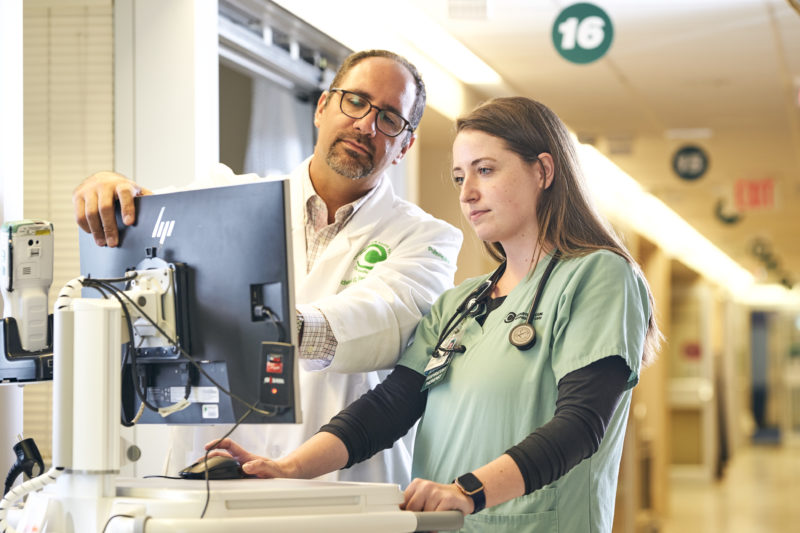
Liberation from life support
In the ICU, part of anticipating patients’ needs is identifying the earliest time they can be safely removed from a ventilator, a process called “liberation.”
Liberation means the patient can breathe without a machine, marking a major milestone in recovery.
The team huddles before beginning the liberation protocol to ensure they have the right caregivers, equipment and process ready, including backup plans if something doesn’t go as expected.
These protocols to prevent complications and liberate patients from ventilation were developed by respiratory therapists who advanced their careers at Christiana Care.
“Once patients are back breathing on their own, they’re happier because they’re one step closer to normalcy,” said respiratory therapist Staples.
Doing data for decades
Well before it became the standard, the Respiratory Care Department at Christiana Care has been plugged into data to provide high-quality, evidence-based care.
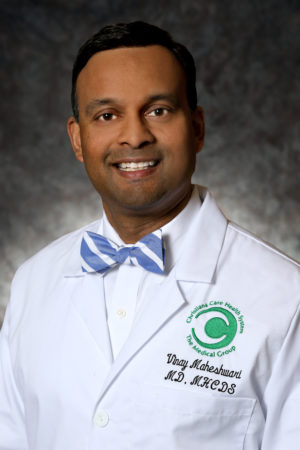
“Our Respiratory Care team was among the first to create dashboards to track their performance and continue to drive performance quality,” said Vinay Maheshwari, M.D., MHCDS, FCCP, vice chair of the Department of Medicine and physician operations leader in the Acute Medicine service line.
Today the team incorporates electronic medical records for care planning and monitoring.
The team also collects data about patients with ongoing breathing conditions, such as chronic obstructive pulmonary disease (commonly known as COPD) to develop patient education that matches patient goals.
“We’re using this data to empower patients to manage their conditions and reduce readmissions to the hospital,” Emberger said.
The department also uses data to ensure optimal staffing, building the equation based on the demand for respiratory care and the average time it will take to perform each task.
By tapping into data from provider orders, said Emberger, the department can estimate demand more accurately than it could by relying on a simpler volume-based metric.
“Combining that data with national standards for how long each procedure takes helps us flex staffing when and where needed to provide resources most wisely,” he said. “We continuously seek ways to be exceptional today and even better tomorrow.”
Building excellence
Respiratory therapists at Christiana Care move up a four-tier clinical ladder, a professional advancement model that recognizes and rewards experience, knowledge and clinical expertise. The clinical ladder allows health professionals to continually improve their skills and to practice at the top of their field.
New caregivers may begin as first-tier, certified respiratory therapists, a credential for those who have graduated from a program and passed a national certification exam. More often they join Christiana Care as registered respiratory therapists (RRT) who’ve passed their national registry exam, qualifying them for the second tier.
As they move up the ladder, respiratory therapists are rewarded with career advancement and the opportunity to work at the top of their license.
“Great respiratory therapists come to Christiana Care because they know they’ll be given education, mentoring and autonomy,” said Michael G. Benninghoff, D.O., section chief of Critical Care Medicine and medical director of Respiratory Care.
Because respiratory therapists’ work spans ages and health conditions — from breathing treatments for high-risk babies, to ventilator care for patients after surgery, to palliative care and treatment — they depend on mentorship to give them disease-specific training, said Vinay Maheshwari, M.D., MHCDS, FCCP, vice chair of the Department of Medicine and physician operations leader in the Acute Medicine service line.
Advances in the ladder come with increases in compensation, expansions to scope of practice and new expectations. Once they reach the third tier, respiratory therapists are expected to participate in quality improvement projects. At the fourth tier, they must create and lead their own quality improvement teams.
“As you rise, you have an obligation to mentor those who are in the rung below you,” Dr. Maheshwari said. “We very much believe in paying it forward.”
